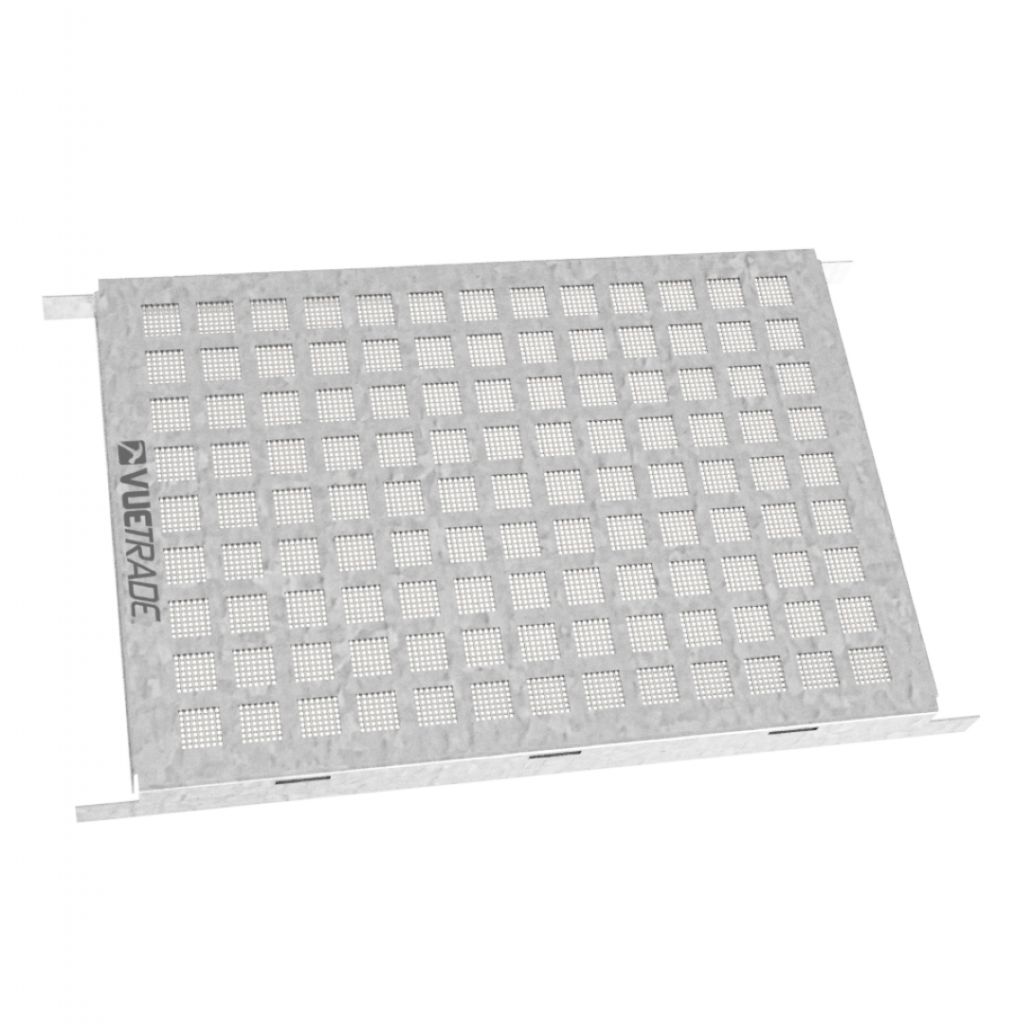
The answer to this question is yes, it will affect the air flow. However, there are several factors that builders, engineers and building surveyors should take in consideration when determining the necessary number of vents fitted with bushfire mesh required to comply with applicable building codes and Australian Standards. The explanation below describes the current methodology VUETRADE implements in calculating the airflow area of its vents.
VUETRADE has run physical tests and measurements to calculate the airflow area of VUETRADE’s Subfloor Punched Vent not fitted with anti-spark mesh, which are shown in Table 1 below.
Table 1: VUETRADE Subfloor Punched Vent airflow area
| Product Code | Size (width x length) (mm) | Air Flow (mm2) |
| VTSFV230X76 | 230 x 76 | 6178 |
| VTSFV230X76SLIM | 230 x 76 | 7615 |
| VTSFV230X160 | 230 x 160 | 13901 |
| VTSFV190X90 | 190 x 90 | 6535 |
| VTSFV190X190 | 190 x 190 | 14376 |
| VTSFV390X90 | 390 x 90 | 13663 |
| VTSFV390X190 | 390 x 190 | 30059 |
The airflow through bushfire mesh can be calculated using the formula below, based on the wire mesh maximum aperture and its wire diameter. This formula is described as the ratio of area of aperture to the area of mesh. This gives a percentage open area (% Open Area) which describes the percentage of open space in a given wire mesh size. (It should be noted that these open area percentages are calculated solely based on the area of wire mesh, not including the airflow area of the vents.)

Where A is the maximum aperture and D is the wire mesh diameter.
VUETRADE Stainless Steel Bushfire mesh has an estimated percentage open area of about 41%. Based on the airflow of VUETRADE Subfloor Punched air vents, the airflow through the vents fitted with anti-spark mesh will then be reduced to the airflow values that follow in Table 2. However, these values assume the following factors:
Table 2: VUETRADE Stainless Steel anti-spark mesh airflow reduction
| Product Code | Size (width x length) (mm) | Air Flow without mesh (mm2) | Net airflow through vents fitted with mesh (mm2) |
| VTSFV230X76 | 230 x 76 | 6178 | 2576 |
| VTSFV230X76SLIM | 230 x 76 | 7615 | 3175 |
| VTSFV230X160 | 230 x 160 | 13901 | 5795 |
| VTSFV190X90 | 190 x 90 | 6535 | 2724 |
| VTSFV190X190 | 190 x 190 | 14376 | 5993 |
| VTSFV390X90 | 390 x 90 | 13663 | 5696 |
| VTSFV390X190 | 390 x 190 | 30059 | 12531 |
With the reduction in airflow due to the fitting of bush fire mesh, it is necessary to factor this reduction in the design of a building to ensure that the minimum requirements of sub floor ventilation, by various regulations bodies such as the Building Code of Australia, are met. It is also recommended to use bush fire wire mesh that is compliant with the Australian Code AS3959, which specifies suitable apertures and materials for bush fire prone areas.
Important notes:
Download the PDF Discussion Article here: